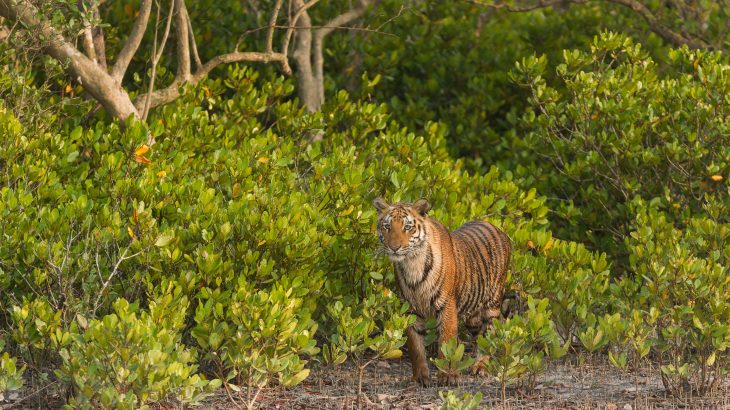Mangroves tend to get overshadowed by their taller counterparts but they are actually an ecological powerhouse. Despite making up less than 1% of the tropical forests around the world, the mangrove ecosystem is able to sequester a significant amount of carbon from the atmosphere and the ocean. This makes it vital in the fight against the climate crises.
As we all know, human activities account for the astonishing increase in carbon emissions and to slow down the rate of climate change, we must reduce emissions. Trees play a crucial role in absorbing carbon, however, of all the trees, studies have shown that mangroves are the most efficient in terms of productivity. Mangroves have the capacity to absorb over 50% of the world’s carbon. A significant amount of the carbon absorbed by the mangroves gets carried away and buried in ocean sediments, hence the name, Blue Carbon.
Blue Carbon – A Game Changer for Climate Action
The carbon captured by marine and coastal ecosystems such as mangroves bring with it a host of benefits that can turn the tide on climate change.
At the outset, it mitigates climate change by storing carbon. Blue carbon helps to support marine ecosystems – marine species are able to thrive. This helps local communities living around the mangroves with food security. A healthy marine and coastal ecosystem also serves as a source of income for the locals. By planting trees and restoring the mangrove biosphere, you can help conserve the environment for the biodiversity to flourish.
Mangroves and blue carbon also act as a buffer against coastal erosion and help to reduce the impact of extreme weather conditions. Moreover, the mangrove biosphere is resilient to the impacts of climate change and can make a significant contribution to climate adaptation efforts. Blue carbon also purifies water and reduces water pollution.
Trees for Tigers®
The largest mangrove forest in the world is the Sundarbans. Known locally as Badabon, it is home to a rich biodiversity. According to the compendium, Fauna of Sundarban Biosphere Reserve, by the Zoological Survey of India there are 2,626 species in all. However, when we think of the Sundarbans, the first thing that comes to mind is the Royal Bengal Tiger. These tigers are a crucial part of this delicate biosphere.
Today, the Sundarbans is battling multiple threats – high salinity levels, deforestation along the coasts, rapid urbanisation and unsustainable tourism practices. All these factors have resulted in a loss of habitat for the diverse range of species that call the Sundarbans home. These issues have also led to an increase in human – animal conflict which was already prevalent in the region.
About Grow-Trees
As part of our afforestation program, we at Grow-Trees are committed to replenishing our green cover. We developed our Trees for Tigers® project in Sundarbans to help restore the carbon sink and to also help create a buffer to help minimize human-animal conflict. In addition to generating employment to the locals through planting activities, the trees we planted will provide the local communities a significant amount of Non-Timber Forest Products such as honey, resin, fruits, beeswax, twigs, barks to name a few. This will improve their livelihood and deter them from entering deep into the mangrove forests, thereby reducing human and animal conflicts. In addition to the benefits to humans, our Trees for Tigers® Project helps conserve the habitat of the majestic beasts.
You too can plant a tree and be part of the blue carbon revolution. By just planting a tree in our Trees for Tigers® projects, you are contributing to restoring our forests and mangroves and protecting our precious wildlife.
With just a few clicks you can plant a tree and create a lasting legacy that will stand strong through history.

